Patrol Craft
The following is a list of U.S.Navy Patrol craft :
1 PC, Patrol Craft Coastal
2 Hydrofoil Vessels
2.1 PHM, Patrol Missile Hydrofoil
2.2 PGH, Patrol Gunboat Hydrofoil
2.3 PCH, Submarine Chaser Hydrofoil
3 PC, Submarine Chaser
4 PCE, Patrol Craft Escort, and PCER, Patrol Craft Rescue Escort
5 PCS, Patrol Craft Sweeper
6 PE, Eagle-Class Patrol Craft
7 PF, Patrol Frigate
8 PG, Gunboat
9 PGM/PG, Motor Gunboat
10 PR, River Gunboat
11 PY, Patrol Yacht
12 PYc, Coastal Patrol Yacht
13 SC, Submarine Chaser
13.1 SC-1 Class (SC-1 to SC-448)
13.2 SC 497 Class
13.3 SC-1474 to SC-1626
14 SP, Shore patrol ships and ID, Inshore Defense ships
A patrol boat is a small naval vessel generally designed for coastal defense duties. There have been many designs for patrol boats. They may be operated by a nation's navy, coast guard, or police force, and may be intended for marine (blue water) and/or estuarine or river ("brown water") environments. They are commonly found engaged in various border protection roles, including anti-smuggling, anti-piracy, fisheries patrols, and immigration law enforcement. They are also often called upon to participate in rescue operations. They may be broadly classified as Inshore Patrol Vessels (IPVs) and Offshore Patrol Vessels (OPVs). They are warships typically smaller in size than a corvette and can include fast attack craft, torpedo boats and missile boats, although some are as large as a frigate. The offshore patrol vessels are usually the smallest ship in a navy's fleet that are large and seaworthy enough to patrol off-shore in the open ocean. In larger militaries, such as in the United States military, offshore patrol vessels usually serve in the coast guard, but many smaller nations navies operate these type of ships. During both World Wars in order to rapidly build up numbers, all sides created auxiliary patrol boats by arming motor boats and sea going fishing trawlers with machine guns and obsolescent naval weapons. Some modern patrol vessels are still based on fishing and leisure boats.

Seagoing patrol boats are typically around 30m (100 ft) in length and usually carry a single medium caliber artillery gun as main armament, and a variety of lighter secondary armament such as machine guns or a close-in weapon system. Depending on role, vessels in this class may also have more sophisticated sensors and fire control systems that would enable them to carry torpedoes, anti-ship and surface-to-air missiles. Most modern designs are powered by gas turbine arrangements such as CODAG, and speeds are generally in the 25�30 knot range. They are primarily used for patrol in a country's exclusive economic zone. Common tasks are fisheries inspection, anti-smuggling (usually anti-narcotics) duties, illegal immigration patrols, anti-piracy patrols and search and rescue (law enforcement-type of work). The largest OPVs might also have a flight deck and helicopter embarked. In times of crisis or war, these vessels are expected to support the larger vessels in the navy. Their small size and relatively low cost make them one of the most common type of warship in the world. Almost all navies operate at least a few offshore patrol vessels, especially those with only "green water" capabilities. They are useful in smaller seas such as the North Sea as well as in open oceans. Similar vessels for exclusively military duties include torpedo boats and missile boats. The United States Navy operated the Pegasus class of armed hydrofoils for years, in a patrol boat role. The River Patrol Boat (PBR, sometimes called "Riverine" and "Pibber") is a U.S. design of small patrol boat type designed to patrol waters of large rivers.
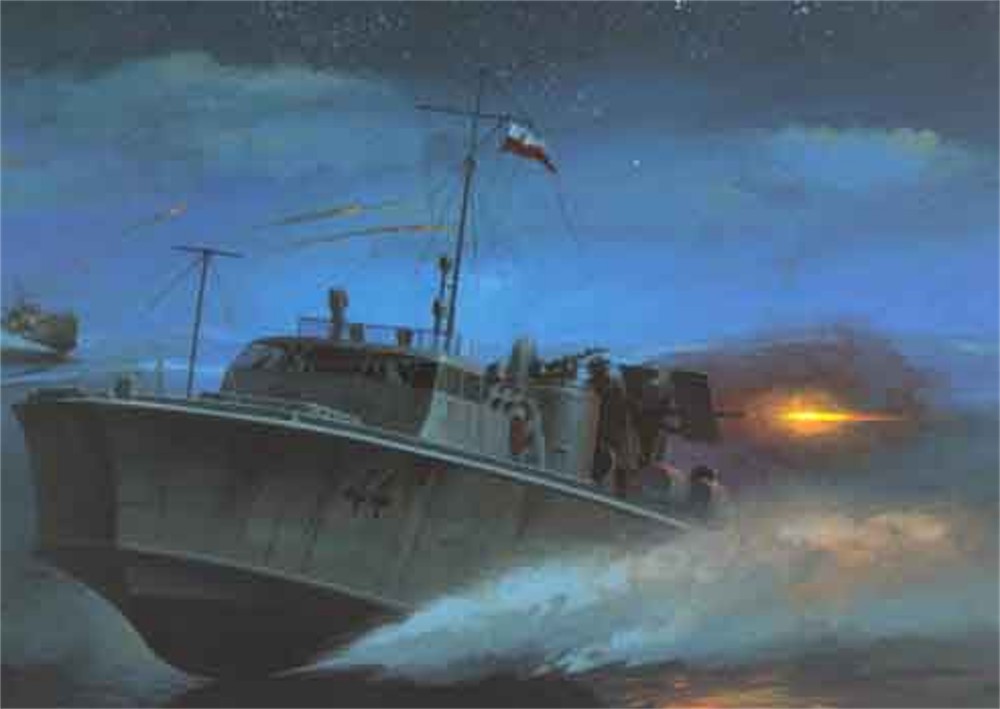
Patrol Boat, River (also referred to as Riverine), or PBR, is the US Navy designation for a type of rigid-hulled patrol boat used in the Vietnam War from March 1966 until the end of 1971. They were deployed in a force that grew to 250 boats, the most common craft in the River Patrol Force, Task Force 116, and were used to stop and search river traffic in areas such as the Mekong Delta, the Rung Sat Special Zone, the Saigon River and in I Corps, in the area assigned to Task Force Clearwater, in an attempt to disrupt weapons shipments. In this role they frequently became involved in firefights with enemy soldiers on boats and on the shore. PBR's were also used to insert and extract Navy SEAL teams. The PBR was a versatile boat with a fiberglass hull and water jet drive which enabled it to operate in shallow, weed-choked rivers. It drew only two feet of water fully loaded. The drives could be pivoted to reverse direction, turn the boat in its own length, or come to a stop from full speed in a few boat lengths. The PBR was manufactured in two versions, the first with 31 foot length and 10 foot, 7 inch beam. The Mark II version 32 feet (9.8 m) long and one foot wider beam, had improved drives to reduce fouling, and aluminum gunwales to resist wear. It usually operated with four enlisted men, of which the most senior crewman was designated the Boat Captain. Often, however, a junior officer would be assigned as Patrol Officer of two boats. The boats were powered by dual 220 hp (164 kW) Detroit Diesel engines with Jacuzzi Brothers water jet drives. The boats reached top speeds of 28.5 knots (53 km/h). The boat was typically armed with twin M2HB .50 caliber (12.7 mm) machine guns (the forward '50s), as well as a rear M2HB, an M60 7.62 mm machine gun, a Mark 19 grenade launcher, and sometimes a 20 mm cannon. The machine gunners were protected with ceramic armor. PBR's were operating with the US Navy Reserves up until 1995 at Mare Island, California prior to the base's closure that year. Mare Island is located in San Pablo Bay, which begins on the northeast side of the San Rafael/Richmond bridge. The opposite side of the bridge is San Francisco Bay. For most people not living in the Bay Area of California, the whole bay is called San Francisco Bay, as there are no visible markers indicating otherwise. During the Vietnam War, Mare Island was home to the US Navy's Repair Facilities, Mothballing Operations, Submarine Operations, and Riverine Training Operations for both Swift Boats and PBR's. The training areas for the PBR's and Swift Boats still exist today within the "Napa-Sonoma Marshes State Wildlife Area." Sloughs such as Dutchman Slough, China Slough, Napa Slough, Devil's Slough, Susiun marshland and the Napa River all run through the former training area. The TV series entitled "Great Ships", sometimes shown on The Military Channel, has one episode covering Riverine Warfare. Live footage showing some of the riverine boats is used, but tall metal electric power lines are visible in the background of the speeding PBR's. Although not mentioned by the narrator, these scenes are of US Navy Reservists undergoing training at Mare Island, California.

In the late 1990s, what remained of the US Navy PBR force (Swift Boats had been retired from the US Navy immediately following the Vietnam war during the early 1970s) was moved further inland towards Sacramento (State Capital), California, which is also intertwined with rivers. From Sacramento, PBR's can still transit directly to and through San Francisco Bay and into the Pacific Ocean, if need be. The waters of the State Wildlife Area, next to the former US Navy (Riverine) training base at Mare Island, are still available for US Navy PBR usage.
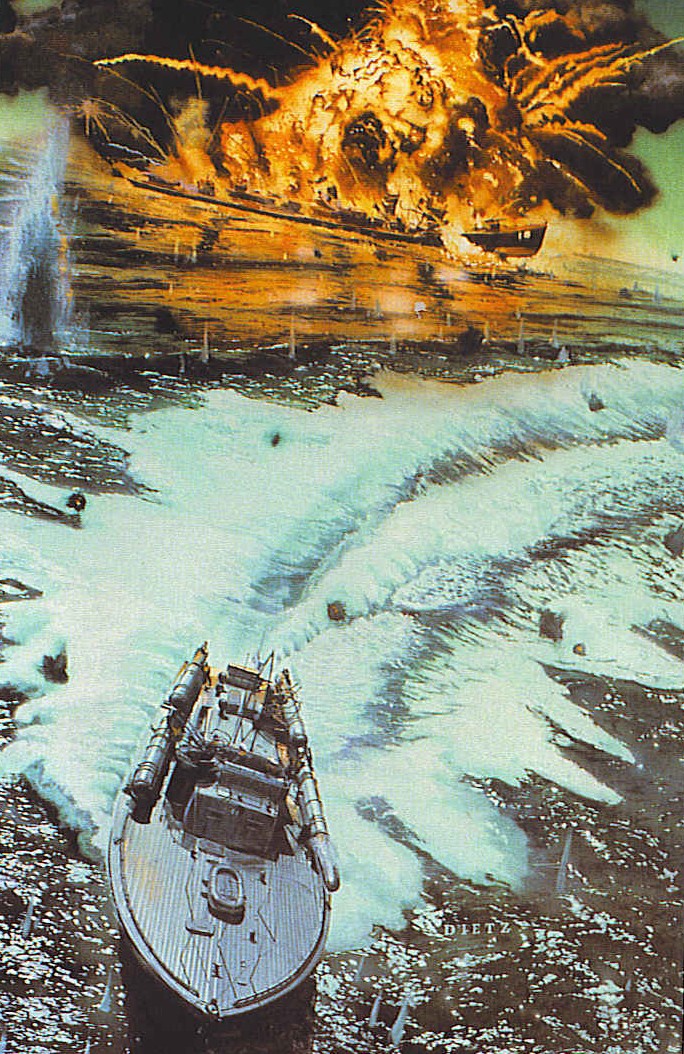
Patrol Craft Fast (PCF), also known as Swift Boats, were all-aluminum, 50-foot (15 m) long, shallow-draft vessels operated by the United States Navy for counterinsurgency (COIN) operations during the Vietnam War. The Swift Boat was conceived in a Naval Advisory Group, Military Assistance Command Vietnam (NAVADGRP MACV) staff study entitled "Naval Craft Requirements in a Counter Insurgency Environment," published 1 February 1965. It noted that "COIN water operations are difficult, demanding, and unique. A prevalent belief has been that COIN craft can readily be obtained from existing commercial and naval sources when needed. Unfortunately, no concerted effort has been made to develop COIN craft specifically suited to perform the many missions needed to combat insurgent activities." The study went on to list characteristics of the ideal patrol craft: Reliable and sturdy Non-wooden hull, with screw and rudder protection against groundings Self-sufficient for 400 to 500 mile (600 to 800 km) patrol Speed of 20 to 25 knots (37 to 46 km/h) Small high-resolution radar range 4 to 6 miles (7 to 11 km) Reliable long-range communications equipment, compatible with Army and Air Force Quiet Armament for limited offense Sparse berthing, no messing Depth meter, accurate from 0 to 50 feet (15 m) Small, powerful searchlight The study was positively received, and the Navy began to search for sources. Sewart Seacraft of Berwick, Louisiana, built water taxis for companies operating oil rigs in the Gulf of Mexico, which appeared nearly ideal. The Navy bought their plans, and asked Sewart Seacraft to prepare modified drawings that included a gun tub, ammo lockers, bunks, and a small galley. The Navy used those enhanced plans to request bids from other boat builders, but Sewart Seacraft was selected.
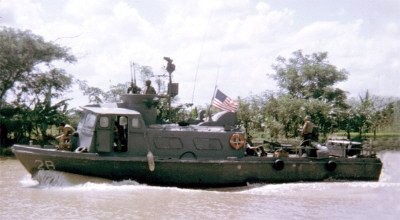
The Swift Boats had welded aluminum hulls about 50 feet (15 m) long with 13 ft (4 m) beam, and draft of about five feet (1.5 m). They were powered by twin 480 hp (360 kW) Detroit Diesel engines with a design range from 320 nautical miles (590 km) at 21 knots (590 km at 39 km/h) to about 750 nautical miles (1,390 km) at 10 knots (1390 km at 19 km/h). Normal crew complement was one officer and five crewmen. The first two PCFs were delivered to the Navy in late August 1965. The original water taxi design had been enhanced with two .50 caliber M2 Browning machine guns in a turret above the pilot house, an over-and-under .50-caliber machine gun � 81 mm mortar combination mounted on the rear deck, a mortar ammunition box on the stern, improved habitability equipment such as bunks, a refrigerator and freezer, and a sink. The 81 mm combination mortar mounted on the rear deck was not a gravity firing mortar as used by the Army and Marine Corps, in which the falling projectile's primer struck the fixed firing pin at the base of the mortar tube, but a unique lanyard firing weapon in which the projectile was still loaded into the muzzle. The gunner could "fire at will" by the use of the lanyard. The weapon had been tested in the 1950s, discarded as the US Navy lost interest in the system. The Coast Guard maintained the gun/mortar system before the Navy incorporated it into the PCF program. Many boats also mounted a single M60 machine gun in the forward peak tank, just in front of the forward superstructure. The original order for 50 boats was followed shortly by an additional order for 54 more Mark I's. In the latter half of 1967, 46 Mark II boats, with a modified deck house set further back from the bow. The newer boats also had round port holes (replacing larger sliding windows) in the aft superstructure. From 1969 through 1972, 33 Mark III's, which were a larger version of the Mark II's, arrived in Vietnam. Although 193 PCF's were built, only about 110 served in Vietnam and the two training bases in California; with remaining PCF's being sold or given to nations friendly to the US. The original training base for Swift Boats had been at the Naval Base in Coronado, California, and in 1969 moved to Mare Island near San Pablo Bay, California where it remained throughout the Vietnam war. PCF training boats frequently transited from Mare Island, through the Golden Gate bridge, then either north or south along the coastline. The only Swift Boat known to be lost while stationed at the new training base was PCF-8, when it sank during a storm off of Bodega Bay, California in December 1969. No crewmen were lost.

The first Swift Boat to be lost during the war was PCF-4, which was lost to a mine in 1966. Three others were lost in rough seas, trying to re-enter the treacherous mouths of the Cua Viet River near the DMZ. PCF-41 was lost in a running gun battle with southern NLF guerrillas operating in South Vietnam in 1966. PCF-43 was lost to a rocket attack in 1969, and PCF's 77, 14, and 76 were lost to heavy seas. Several other Swift Boats had been lost to river mines, but had been salvaged and either repaired or used for spare parts. In June 1968, PCF-19 and PCF-12 were patrolling near the DMZ (17th parallel) when they were attacked by hovering aircraft at night time. Within minutes, PCF-19 had disappeared from an explosion, and PCF-12 commenced a running gun battle with its .50 caliber machine guns for well over an hour with those "hovering lights." During this battle, PCF-12 had been continuously radioing that they were under attack by unidentified aircraft, i.e. hovering aircraft. The response was a continuous one, "no friendly aircraft in the area". Further radio traffic informed PCF-12 that US Forces had suspended all flying operations within PCF-12's area, in order to isolate the problem; especially rotor-wing aircraft (helicopters). But the Swift Boat was still in contact (still engaged with the enemy). Hours elapsed, but still in darkness, US jet aircraft responded to PCF-12's firefight, but bypassed them and headed for the Australian destroyer HMAS Hobart (D 39) [p. 100] and the heavy cruiser USS Boston (CAG-1), the US jets fired rockets killing two Australian sailors, and slightly damaging the Hobart, and the USS Boston. Parts of the recovered rockets had US data on them identifying them as American. The hovering aircraft had also been seen by US Marines on shore, near the DMZ, on the South side of the border. When all reports had been submitted, the attacks on the two allied warships were attributed to the US attacking fixed-wing aircraft (fratricide), and also for attacking PCF-12, and destroying PCF-19.[1] A primary complication, that helped to make the above conclusion, is that the battle between the Swift Boats and the unidentified hovering aircraft started between midnight and 0100 hours on 16 June, and the attacks (fratricide) on the Boston and Hobart occurred during the same time frame, only on the 17th of June. These were two separate dates, and, in reality, two separate incidents. When completed (the reports) both events had somehow been merged into one incident; again, fratricide. It had been theorized, by both officers and men (US Army, USMC, USN) that the, "NVA helos were flying artillery...", etc. to Tiger Island, located just off the North Vietnamese coast. However, it goes beyond theory, when official reports, such as OIC, PCF-12's Combat After Action Report dated "20 OCT 1967" (1968) for "Market Time Patrol", "151130H JUN-161130H JUN 1968", mentions in part "...enemy held Tiger Island...possible base of operations for North Vietnamese military..." and "under constant air attack from all angles Helo...gunners ordered to fire the .50 caliber guns at any and all air contacts..." There were more than enough declassified official reports that mention "enemy aircraft" to conclude that the loss of PCF-19 was due to North Vietnamese helicopters. It is important to note however, that as of 2006, PCF-12 and PCF-19 were still carried by the US Navy as attacked/lost from friendly fire. The most frequent training area for the Mare Island units was the marshland that forms the northern shoreline of San Francisco Bay. This area, now known as the Napa-Sonoma Marshes State Wildlife Area, was also used by US Navy Reserve unit PBRs (Patrol Boat, River) up until 1995, when Mare Island was scheduled for Base Closure. During those years in which the Swifts and PBRs were operating, motorists traveling along Highway 37 from Vallejo, which passes Mare Island, to the Bay Area would often see the Riverine Boats making their way through the various sloughs of the current wildlife area. US Naval Riverine Training is still authorized in the waters of the State Wildlife Area, and portions of the TV History Channel Series Gunboats of Vietnam, were filmed there. As of 2006, there are two Swift Boats known to exist as static displays in the United States. Both are ex-U.S. Navy PCF Swift Boats that were originally stationed in California to train PCF crews. One is located at the Navy Museum at Washington Navy Yard in Washington, D.C. ; the second Swift Boat is on the Naval Special Weapons Base at Naval Air Station North Island in Coronado, California, the original home of PCF training. A further two Swift Boats still operate as part of the Maritime Squadron of the Armed Forces of Malta. These craft, transferred in 1971, carry hull numbers P23 and P24 respectively and, while somewhat modified, still have the look of the original riverine warfare boats.
PC-1 Cyclone class Patrol Coastal Craft The primary mission of these ships is coastal patrol and interdiction surveillance, an important aspect of littoral operations outlined in the Navy's strategy, "Forward...From the Sea." The craft are able to transport small SEAL teams and their specialized delivery craft or Coast Guard boarding teams for counter-drug inspections. These ships also provide full mission support for Navy SEALs and other special operations forces. The Cyclone class ships are assigned to Naval Special Warfare. Of the thirteen ships, nine operate out of the Naval Amphibious Base Little Creek in Special Boat Squadron Two, and four operate from the Naval Amphibious Base Coronado at San Diego.

These ships provide the Naval Special Warfare Command with a fast, reliable platform that can respond to emergent requirements in a low intensity conflict environment. They have limited endurance for their size, and their combat systems and ammunition allowance do not compare well with similar ships in most other navies. They are about ten times the size of their predecessors but carry about the same payload. It was belatedly discovered that they are too large for the close inshore work for which they were intended.

Smaller than most Navy vessels, at 180 feet, PCs still pack a lot of punch. With a top speed of 35 knots and two 25mm chain guns capable of pumping out a blistering 175 rounds per minute, as well as many other small arms, a would-be terrorist should think twice before trying to make a run past these guys. The craft have Vosper fin stabilization system and a stern wedge to improve trim at high speeds. Kevlar armor is fitted to the command space. PC 5 and later use heavier superstructure plating. The minimum speed is 3 kts. They were to carry two 16-ft. SEAL CRRC (Combat Rubber Raiding Craft) and one 18-ft rigid inflatable swimmer delivery craft, but on completion carry only the RIB. There is a recessed platform at the stern for swimmer debarking and embarking. Displacement has grown about 15 tons during construction, but they are still much lighter than their missile boat half-sisters in the Egyptian, Omani, and Kenyan navies. Further modifications are expected to raise the full load displacement to 341 tons. They can refuel at sea, using astern fueling rigs. An active radiated noise cancellation system is to be added. The Sperry Vision 2100M combat system employs the navigational radars and the Sperry Voyage Management System integrated navigation and control system as a combat data suite. Ammunition supply includes 2,000 rounds 25-mm, 2,000 rounds .50 cal, 2,000 rounds 7.62-mm, and 1,000 40-mm grenades. Plans to fit Hellfire missiles have been dropped. The after Mk 38 mounting has been replaced with a stabilized Mk 96 mount with combined 25-mm gun and 40-mm grenade-launchers in lieu of previous plan to fit a stabilized multi-purpose mount fore and aft; the unwieldy Mk 38 mount forward will be retained. There were initially four interchangeable mountings for .50 cal and 7.62-mm machineguns or Mk 19 40-mm grenade launchers: one to starboard at the stern, and three on the bridge (two port, one starboard); two bridge positions are now occupied by twin .50 cal mounts. The radar intercept equipment was developed for use on helicopters. Each Mk 52 decoy rocket launcher carries 12 ready-service rounds, and 15 more rockets per launcher are carried in adjacent lockers. The decoy launchers in one unit are to be replaced by two 12-round, 102-mm ML Aviation Super Barricade rocket launchers mounted on superstructure platforms for trials. Navigation systems include Global Positioning System and Loran receivers. Radio gear includes LST-5C SATCOM/line-of-sight UHF transceiver, A5 Spectra VHF radio, ICM120 Marine Band radio, and RF 5000 HF, VRC-92A VHF, and VRC-83(V)2 VHF/UHF transceivers. AN/SAT-2A infrared signaling systems are fitted, and the Marconi Vistar stabilized FLIR sensor with integral low-light-level television camera is mounted on the mast. Have IFF transponder but no interrogation capability, although it may be added later. The sonar transducer is retracted within the hull at speeds above 14 kts.

The Pegasus-class hydrofoils were a series of fast attack patrol boats employed by the U.S. Navy. They were in service from 1977 through 1993. These hydrofoils carried the designation "PHM" for "Patrol, Hydrofoil, Missile." The Pegasus class vessels were primarily intended for green water coastal operations, such as narcotics interdiction and coastal patrol.
Admiral Elmo Zumwalt began the PHM project to increase the Navy's number of surface vessels in a cost-effective manner. The project was to involve four other navies :the Royal Navy, Canadian Forces, the Bundesmarine, and the Marina Militare, for as many as 100 craft.
After Zumwalt's retirement, the Navy chose to funnel most of the money for the PHMs into larger vessels. This delayed the ongoing construction of Pegasus, and the other vessels were not started. Congress eventually forced the Navy to complete the vessels. The difficulties in project progression forced the other involved navies to abort their participation.
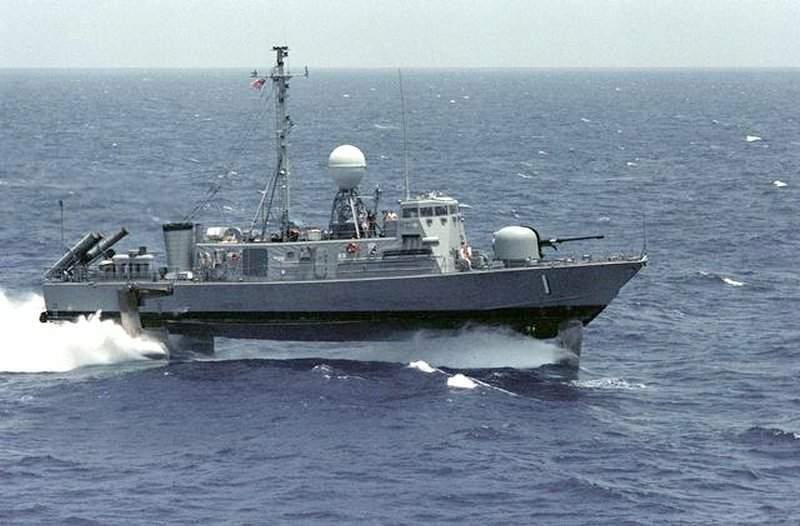
The Pegasus class ships were powered by two 1,600 horsepower (1,200 kW) Mercedes-Benz diesels when waterborne, giving them a speed of 12 knots. When foilborne, the ships were powered by a General Electric LM2500 gas turbine, giving them a speed of 48 knots.
Pegasus ships were well armed for their size, carrying two four-rack RGM-84 Harpoon anti-ship missiles and an Oto Melara 76 mm gun. The Harpoons, specifically, were capable of sinking far larger ships at distances in excess of 60 nautical miles (110 km). The German version would have carried the MM38 Exocet.
As Pegasus was constructed several years before the rest of the series, there are some slight differences, such as the fire-control system.
All six vessels were constructed by Boeing, in Seattle at the Renton plant at the south end of Lake Washington. They were stationed at NAS Key West.
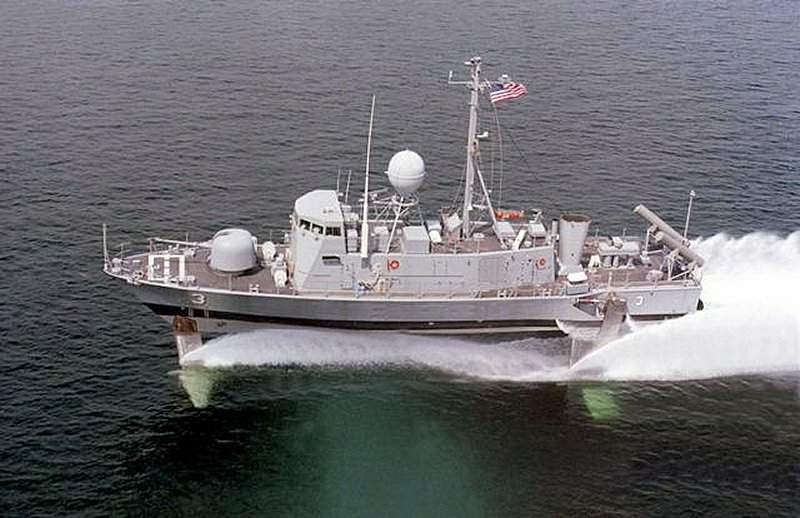
The technology was first pioneered by the USS Tucumcari (PGH-2) which was tried in Vietnam, but ran aground. It was judged to be more advanced than the Grumman Flagstaff which was built at the same time to the same requirements. The primary technology, also used in the Boeing Jetfoil ferries, used submerged flying foils with waterjet propulsion.
The ships were retired because they were not judged cost effective for their mission in a Navy with primarily offensive missions rather than coastal patrol. USS Aries PHM-5 Hydrofoil Memorial, Inc. obtained Aries for rehabilitation as a memorial located on the Grand River in Brunswick, Missouri . All other PHMs in the class were sold for scrap.




 Patrol Craft Fast
Patrol Craft Fast
 US Navy Special Warfare
US Navy Special Warfare
 Swiftboats
Swiftboats
 Swiftboat Net
Swiftboat Net
 PHM-5
PHM-5
 Combat Craft >/A>
Combat Craft >/A>
 PBR Forces Vets
PBR Forces Vets
 Vietnam Veterans Memorial
Vietnam Veterans Memorial




















 Patrol Craft Fast
Patrol Craft Fast 